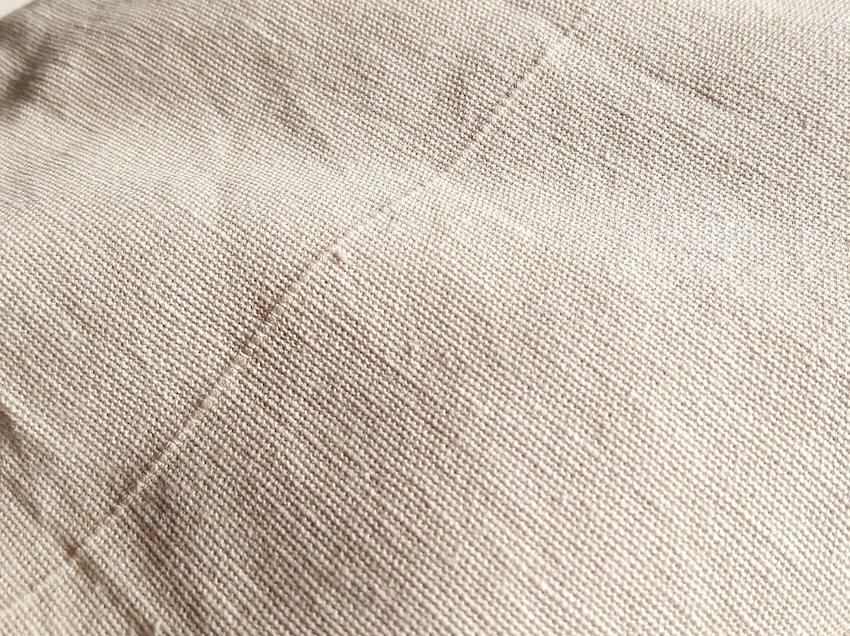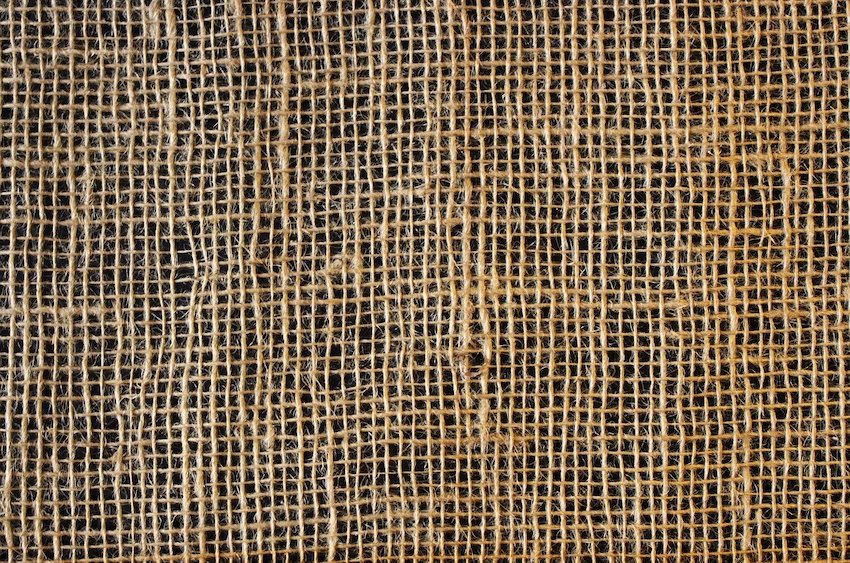Materials that block the sun’s ultraviolet radiation are used in many products such as sunglasses, shirts, and hats for sun protection.
Many fabrics can block some of the sun’s harmful rays because they are naturally resistant to fading from sunlight exposure, but some materials are better equipped for sun safety than others.
We’ll dive into the best fabrics for sun protection, as well as what factors to consider when selecting the materials for UV-blocking capabilities.
Best Fabrics for Blocking UV Rays
Some of the best fabrics for blocking UV sun rays include:
Cotton

Unbleached cotton contains natural lignins (a common polymer in plants) that act as UV absorbers (source). Bleached cotton, on the other hand, is a less than ideal choice for sun protective clothing, as dyes and chemicals break down the fabric’s composition.
Considering that bleached cotton is much more common in clothing than unbleached cotton, most cotton t-shirts are not ideal for sun protection.
Denim

Denim is a popular fabric that is commonly used to make jeans, jackets, and other clothing items.
One of the reasons denim is a good material for blocking UV rays is because it is a tightly woven fabric. Denim’s tight weave prevents a significant amount of UV radiation from passing through the fabric and reaching the skin.
This makes denim a solid choice for outdoor activities where you will be exposed to the sun for long periods of time.
Additionally, denim is a thick fabric, providing even more of a solid barrier between the skin and the sun’s rays. The downside is that denim’s thickness can feel heavy and stuffy in the heat of the day.
If you’ve ever worn jeans when walking around on a hot day, you know how easy it can be to get sweaty an overheated in jeans! But at least you’ll be protected from UV rays.
Polyester/Nylon & Synthetic Blends

The tightly woven fibers in nylon and polyester make it difficult for UV rays to penetrate the fabric.
Synthetic blends like these are some of the most popular materials for all types of sun protection clothing for women and men, from as they offer a tight weave while remaining relatively lightweight and comfortable.
Canvas

Similar to denim, canvas has a tight, thick weave that allows for great sun protection, but it can feel uncomfortably heavy as clothing, especially in the heat.
Canvas works great for sun umbrellas or other awnings and shade tents designed to protect from the sun.
Linen

Linen is a tightly woven fabric made from the fibers of the flax plant. It’s a popular natural fabric because it is durable and has the ability to block both UVA and UVB.
Linen also has the ability to control body temperature when worn in warmer climates. However, it also wrinkles easily.
You also need to be careful of the linen’s weave, as some linen fabrics have looser weaves than others. Make sure you’re seeking out a tightly woven linen for optimal UV protection!
Wool

Wool is a popular natural fabric that can block both UVA and UVB rays. However, wool tends to hold onto odors and moisture, plus it can be itchy against the skin, making it an unpopular choice for sun protective clothing in the summer.
Fabrics to Avoid for Sun Protection
Not all fabrics are ideal for protecting against UV rays, and some are quite unsuitable.
Fabrics to avoid include:
- Crepe
- Bleached cotton
- Viscose
- Knits
- Worn fabric
Factors That Affect A Fabric’s Sun Protection Ability
Stretch / Fit
Clothing that stretches can have less UV protection than clothing that does not stretch, as when the weave of the material loosens when the fabric stretches.
In fact, one study showed that a 15% stretch in cotton/lycra fabric cut a fabric’s UPF clothing in half! (source) This is why you shouldn’t be surprised if you find yourself getting sunburnt through your clothes, especially if you are spending a full day in harsh, direct sunlight with stretchy clothing made of bleached cotton!
For this reason, looser-fitting clothes tend to provide better sun protection than tight-fitting items.
Treatment
Some fabrics are pre-treated with UV-inhibitor chemicals to increase sun protection. However, these treatments can wash out over time, so don’t rely too much on the chemical treatments and give plenty of thought to the type of fabric itself being used in the clothing.
If you are purchasing clothing that has been pre-treated with special chemicals to block UV rays, read and follow all instructions for washing very carefully.
You may want to consider purchasing your own sun protection treatment for clothing that you can apply and re-apply yourself, at home. SunGuard Detergent is one popular UV-blocking additive that can be added to your laundry during a wash cycle.
Once added, it gives clothing an SPF factor of 30 and lasts up to 20 washes!
Weave Density
Clothing requires a tight weave to keep out the sun, as a looser weave allows for gaps and holes that allow UV rays to pass through.

To test a fabric’s weave and measure the effectiveness of its sun protection, hold it up to a light (the sun works great).
If you can see any light through this cloth, the fabric may not offer sufficient sun protection.
Weight
Lighter-weight materials tend to offer less sun protection than materials with thicker, heavier-weight fibers (source), with the downside of course being that heavier materials are less comfortable in the summer.
Color / Dye

Colored fabrics have higher UV protection – this is because they maintain their color due to the benzene atoms in the molecules that make up these dyes. This means that they can also absorb ultraviolet rays!
The best colors for sun protection tend to be dark colors like navy blue, black, and dark purple – or, super vivid shades like red. One study even found that dying fabric blue increased the UPF by 544% (source).
Ideally, avoid white and lighter pastel shades, as they won’t provide as much sun protection.
Wetness
The dryer the fabric, the better sun protection it will provide. Wet fabric can be up to 50% less effective than dry fabric.
Coverage
Longer-sleeved shirts and pants will naturally provide better coverage and more sun protection as opposed to tank tops or short-sleeved shirts.
As you can see, there are a variety of fabrics that can provide great sun protection!
We suggest experimenting with different materials to see which you find the most comfortable and which suits you best. What’s your favorite kind of UV-proof fabric? Let us know in the comments below!


I recently moved to Arizona and I don’t have covered parking. I have to date purchased 3 different car covers. Two I paid $300 for. They all had the same problem, they encapsulated the heat inside my vehicle. I have taken to putting towels on the hood, roof, over the windshield wipers and steering wheels. I still wish there was just one product I could use.
Use polycarbonate roof as it will give good sun protection
Thanking you ,
I am a medical device designer based here in Australia. I have been commissioned to both design and research the UV protection provided by certain natural fabrics.
Due to “ Global Warming “ issues and UV danger levels demand for effective apparel to protect is most significant.
Does microfiber protect against the damaging rays you get from the sun? I am British, Irish, Swedish, Cherokee and Roma. I got this from Ancestry. I never tan, just burn. My great grandmother Clara Davenport, died from melanoma of the skin.